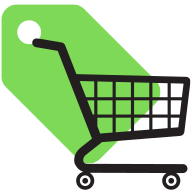7 Ways Customer Segmentation Improves Abandoned Cart Recovery
Abandoned shopping carts are a persistent challenge for e-commerce businesses, but customer segmentation offers powerful solutions. This article explores expert-backed strategies to improve abandoned cart recovery rates through targeted approaches. Discover how tailoring your efforts to specific customer groups can significantly boost your success in reclaiming lost sales.
- Personalize Strategies for Different Customer Groups
- Tailor Messages to Customer Journey Stage
- Segment Based on Product and Customer Factors
- Reconnect with Customers Through Personalized Emails
- Implement Targeted Email Reminders with Incentives
- Craft Segment-Specific Messages to Boost Recovery
- Customize Recovery Efforts Using Customer Data
Personalize Strategies for Different Customer Groups
Customer segmentation plays a critical role in abandoned cart recovery efforts because it allows for personalized and targeted strategies that address the specific needs and behaviors of different customer groups. By segmenting customers based on factors like purchase history, engagement level, and abandonment reasons, we can create more relevant and compelling messages that increase the likelihood of conversion.
How Segmentation Helps in Abandoned Cart Recovery:
Behavioral Segmentation: By analyzing customer behavior--such as items they've added to their cart, how much time they spent on the site, and what step in the checkout process they abandoned--we can identify where they are in the buying process. For instance:
- Frequent shoppers who have abandoned a cart may respond well to a simple reminder or special offer.
- First-time visitors who abandon their cart might need more education on the product or an enticing incentive like free shipping.
Demographic Segmentation: Understanding factors like age, location, and income can help tailor the messaging and offer. For example, younger shoppers may respond better to a flash sale or discount code, while older customers may prefer free shipping or easy return policies.
Engagement Segmentation: Customers who have shown more interest in your brand and products are more likely to return and convert. By segmenting based on engagement (e.g., email open rates, previous purchase history), you can offer these customers a more personalized email, perhaps including product recommendations based on what they've previously browsed.
Example of Abandoned Cart Recovery with Segmentation:
I worked on an e-commerce campaign for a fashion retailer, where we segmented our abandoned cart recovery emails based on purchase history and frequency of abandonment:
High-Frequency Shoppers: For customers who regularly purchase from the brand but had recently abandoned a cart, we sent a personalized email with a 10% discount code to nudge them toward completing the purchase. We also included a VIP customer benefit (like early access to new products) to make them feel valued and enhance their loyalty.
New Visitors: For first-time visitors who abandoned their cart, we sent an email reminding them of the products they'd added and included educational content on the quality and value of the items, along with a first-time purchase discount to encourage them to complete the purchase.

Tailor Messages to Customer Journey Stage
Customer segmentation plays a huge role in our abandoned cart recovery strategy. Not everyone abandons a cart for the same reason--some people are just browsing, others need more time, and a few might be waiting for a deal.
By segmenting users based on where they are in their buying journey, we can tailor the messaging to what they need most. For example, if someone's a first-time visitor, we might send a follow-up email highlighting trust signals like reviews and guarantees. If they've visited multiple times or engaged with our emails, we'll focus more on urgency or offer limited-time discounts.
The right message at the right time makes a huge difference--this kind of segmentation has helped us boost recovery rates and speed up conversions.

Segment Based on Product and Customer Factors
Customer segmentation is vital for abandoned cart recovery. It allows us to personalize messaging, increasing relevance and conversion. We don't send generic "you forgot something" emails. Instead, we segment based on product type, cart value, and browsing history.
For example, a customer abandoning a high-value tech item may receive a personalized email highlighting its advanced features and offering priority support. Conversely, someone abandoning a low-cost item might get a limited-time discount or a reminder of related accessories. This targeted approach significantly boosts recovery rates.

Reconnect with Customers Through Personalized Emails
Customer segmentation plays a huge role in our abandoned cart recovery strategy because it allows us to personalize our outreach based on who the customer is and what they're interested in. For example, when someone leaves items in their cart without completing the purchase, we don't just send a generic reminder. Instead, we tailor the messaging depending on factors like their shopping behavior or previous purchases. One example of this is how we send out an email a few hours after the cart is abandoned, letting the customer know they left something behind. The email gently nudges them with a friendly message like, "Hey, you forgot something!" and includes a direct link back to their cart so they can finish checking out with ease. This more thoughtful, segmented approach helps us reconnect with customers in a way that feels more natural and relevant to them.

Implement Targeted Email Reminders with Incentives
One effective tactic we've employed to reduce cart abandonment on our e-commerce site is implementing personalized email reminders for customers who leave items in their cart. When a customer abandons their cart, we send a series of follow-up emails reminding them of their selected items, often including a limited-time discount or free shipping offer to incentivize them to complete their purchase.
This approach has had a measurable impact on recovering lost sales. Since implementing the email reminders, we've seen a significant increase in our cart recovery rate, with approximately 20% of abandoned carts being converted into completed sales.
Additionally, these personalized emails have improved our overall customer engagement, as customers appreciate the tailored communication and special offers. The inclusion of discounts or special deals in the reminder emails has been particularly effective, making customers feel valued and encouraging them to finalize their purchases. This tactic not only helps us recover lost revenue but also strengthens our relationship with our customers.

Craft Segment-Specific Messages to Boost Recovery
Customer segmentation is a powerful tactic in the realm of abandoned cart recovery, enabling businesses to tailor their communications based on specific customer profiles. By understanding the distinct characteristics and preferences of different segments, companies can craft messages that resonate more deeply with each group, increasing the likelihood of re-engaging the customer. For instance, if a segment is identified as price-sensitive, sending them a discount offer might be particularly effective.
A practical example of this can be seen with an online retailer specializing in athletic wear. They noticed that their younger customers aged 18-25 were abandoning carts more frequently than other segments. By analyzing this group's behavior and preferences, the retailer sent follow-up emails that highlighted a limited-time 20% discount on the trendiest items in their abandoned carts, combined with social proof in the form of testimonials from similar age group influencers. This strategic, segmented approach led to a notable increase in recovered carts from this demographic. The takeaway here clearly shows that understanding your customer segments can dramatically enhance the effectiveness of your abandoned cart recovery strategies, ultimately boosting sales and customer retention.

Customize Recovery Efforts Using Customer Data
Customer segmentation is essential for the recovery of abandoned carts, as it enables you to customize your strategy to the unique behaviors, preferences, and requirements of distinct customer groups. By segmenting your audience, you can send more personalized and targeted messages that resonate with specific individuals, thereby increasing the likelihood of them returning to complete their purchase.
For instance, in a recent campaign, we divided consumers into segments based on their browsing behavior and cart value. Customers who had only added a single item to their cart were reminded of the product benefits and given a mild nudge to complete the purchase, while high-value cart abandoners received a special discount code in their recovery email.
We also took into account the timing of the communication. Customers who abandoned their cart within an hour received a brief reminder, while those who waited longer received a sequence of emails that began with a mild reminder and progressed to an offer if they had not yet converted. In comparison to previous, non-segmented endeavors, this segmentation and tailored follow-up resulted in a 15% increase in recovery.


